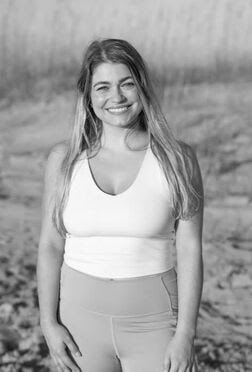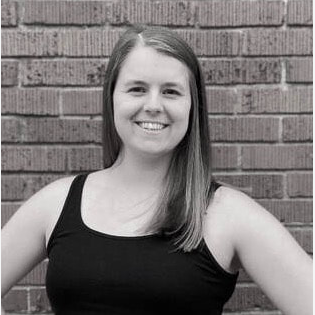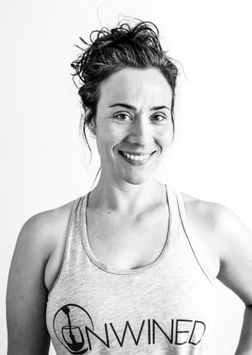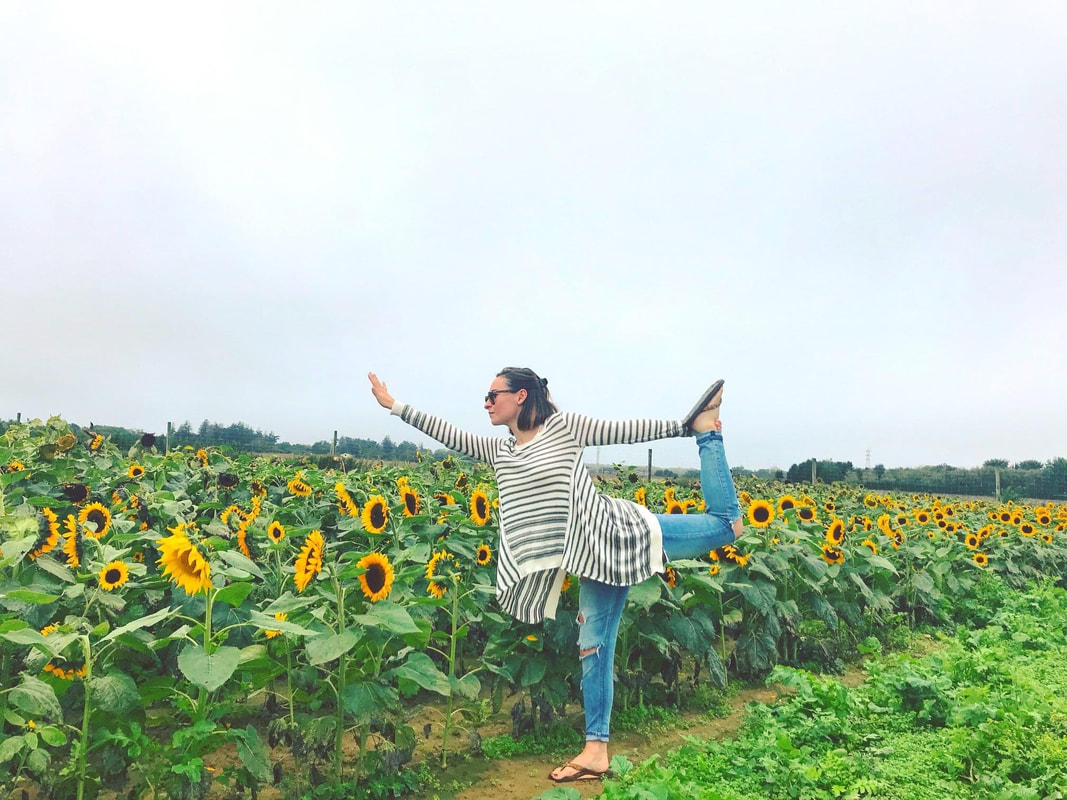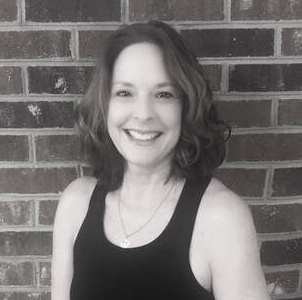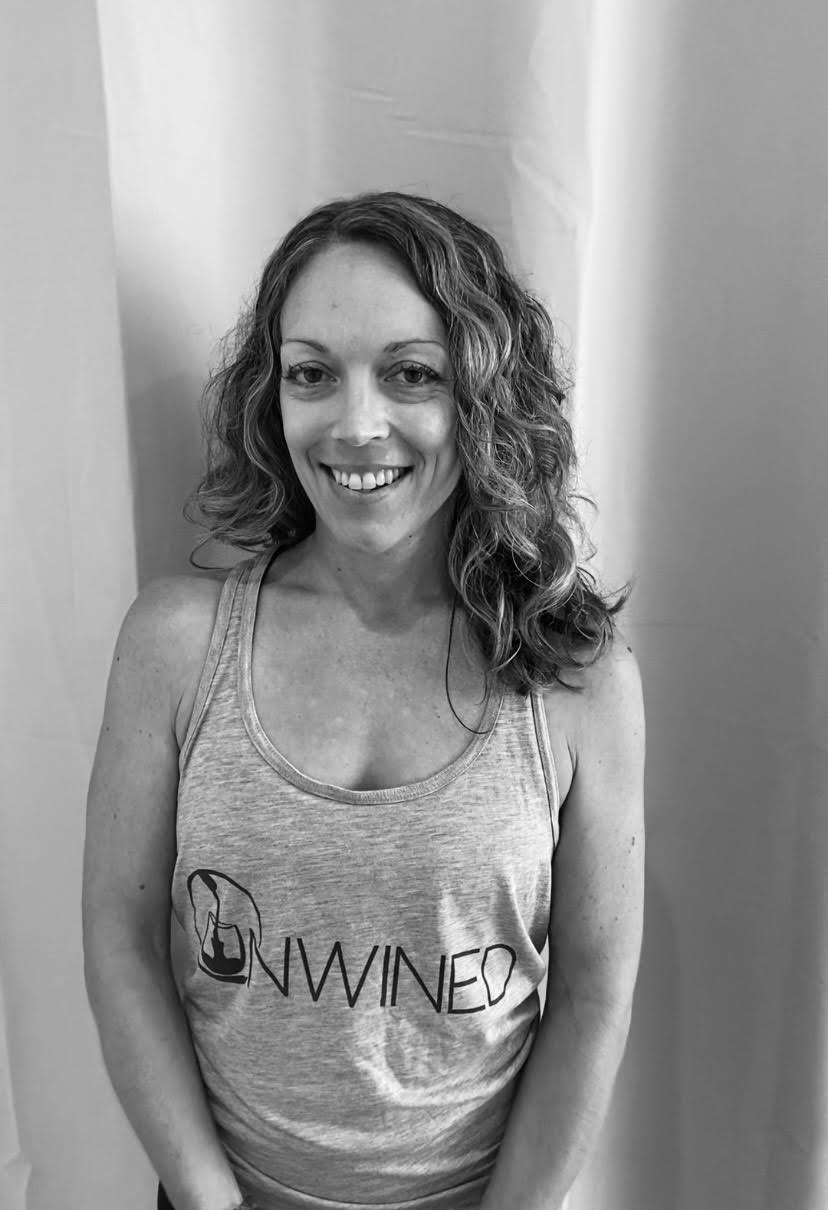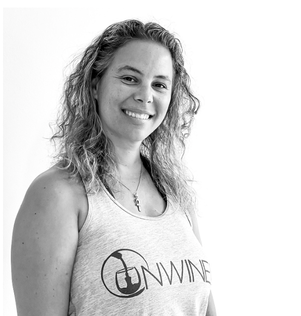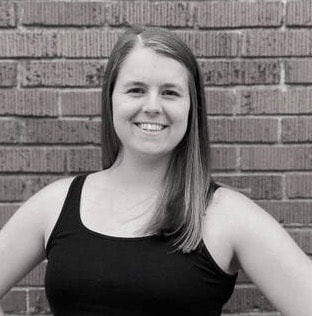|
The Yamas & Niyamas
The 10 yoga guidelines to skillful decisions and to a wholesome life. By: Ashley-Brooke Winger Yoga is a sophisticated system that extends far beyond doing yoga poses, it is a way of living. When approaching this topic, I ask you the following question: “How do we gain mastery over our choices when life seems to toss us around with its ups and downs, many demands, and many voices telling us what we need and what’s wrong with us?” The answer is that we should turn our focus inward. In yogic philosophy, these two rare gems of wisdom sit as the first two limbs of the 8-fold path outlined by Pantanjali*. These two pillars, the Yamas and Niyamas, are often seen as a code of conduct for living a good life and are believed to be the foundation of our yoga practice. When we feel lost or overwhelmed, we can turn to our yoga practice. By honoring the union yoga provides for our lives, we progress towards “the path” of creating a more mindful life by cultivating more “wholeness.” The Yamas and Niyamas are the first two pillars of the 8-limb path that leads us to enlightenment. These pillars have five sub-bullets of ethical disciplines that help us take those steps toward clarity. Yamas, a Sanskrit word that directly translates as “restraint” lists the first five disciplines often referred to as a moral code. These include Ahimsa (nonviolence), Satya (truthfulness), Asteya (nonstealing), Brahmacharya (nonexcess), and Aparigraha (nonpossessiveness). The Niyamas often translate to “observances” or “positive duties” that have to do with our approach to life. These outline recommendations of habits for healthy living. The Niyama disciplines include Saucha (purity/cleanliness), Santosha (contentment), Tapas (discipline/enthusiasm), Svadhyaya (self-study), and Isvara Pranidhana (surrender). If we are to really benefit from the yoga practice, we need to take the lessons learned off our mats and into our real lives. It is said that if you practice one, the others will naturally follow. Your approach to these teachings is supposed to be unique to you and your experience, so let the lessons come to you, and trust your intuition as you begin to cultivate them in your own life. *The 8-fold path outlines the practice of yoga understood by Pantanjali in the Yoga Sutras. |
|
Self-care and Bringing Your Yoga Practice Home
By: Taylor Daily Lima Self-care is super important in our lives. We hear this all the time, but sometimes it’s easier said than done when trying to establish a routine that is unique to your personal wants and needs. If you’re finding yourself craving a some time and space just to pour back into yourself - you’ve come to the right place! Building a home yoga practice doesn’t have to be complicated. Keep it simple! Start by incorporating a breathing technique with a couple of poses, and build upon that as you go. A few of my staple poses to add into your home practice: Child’s pose - this tends to be a highly recognized pose, and for good reason! Not only does it feel super grounding, but this pose can also release tension stored in the back, hips, ankles, and arms. The forward fold with the upper body in this shape is also very calming to the nervous system, making this pose a powerhouse for stimulating relaxation in both the body and mind. Pigeon - hip openers are great to add into your home practice. Our hips tend to be a storage unit for tension and unprocessed emotions. Taking the time to release any stagnant energy in this area not only invites more ease in the physical body, but can aid in healing emotional aspects our lives as well. This pose can also be modified to a figure 4 position on the back as well, making this deep hip opener more accessible in the body if the standard variation causes too much compression in the knee. Reclined bound angle pose (supta baddha konasana) - get your props out for this one! There are many benefits to this deeply relaxing pose. Having a supportive prop underneath the back creates a backbend which can aid with circulation in the heart space. Having the legs in a butterfly position helps to stretch the hips and inner thighs, creating more space in these areas as well. Overall this pose will allow you to relax, release, and breathe easier. Even if you only have 5 minutes, incorporating a home yoga practice into your daily routine will bring more balance and ease into your day. You deserve to pour into yourself so that you can continue to serve from a place of overflow. |
|
Intention Setting
By: Jana Burkhardt How many times as you sit in a yoga class do you hear your instructor ask you to set your intention for practice? And then the questions start... What does that even mean? What would be meaningful in this moment? How do I remember this intention throughout my class, let alone in the next 5 minutes?!? Take a breath! I love intention setting and I hope you will too. To me, this helps connect my yoga practice deeper than just exercise. It helps to bring my yoga off my mat, integrating it into daily living. So where do you start? The good news is that each day can be a chance to reset, but we love to use the beginning of a season or in this case the year as a symbolic starting point. I challenge you to take some time to yourself. Find a comfortable place to sit with a journal or piece of paper. Consider times in 2023 or this most recent season that you would like to leave behind. Think about the root of that struggle. Maybe it's fear or burnout. Maybe it's loneliness or grief. Is there a reasonable opposite for this? It could be bravery, passion, friendship, or joy. What would make the biggest difference if you invited more of that thing into your life? Once you've narrowed down your choices, let yourself consider the ways that can show up in your life. On your mat, you choose to laugh at the moments when you fall out of a posture and smile at the moments of strength. In your interactions with coworkers, friends and family, you can take the time to recognize and acknowledge their support. In nature, you can be present to the colors, sounds, and textures. See what it feels like to bring the word up in your subconscious repeatedly in different scenarios. The beautiful thing about an intention is that it is something you can revisit as many times as you need. It isn't a task that you say you'll check off only to be disappointed in yourself when it doesn't happen. Instead it is a feeling or value that you want engrained in your every day. It is something that takes practice and time - that you will get right and wrong. Your yoga is a journey on and off the mat. When you are on your mat next, give it a try. Think about that intention each time you find child's pose or rise to mountain pose. Let that be the thing you think of as you close your eyes for savasana. See how keeping it close on your mat helps you to keep it close off your mat! So what will you set as your intention for 2024, the rest of January, or maybe just the rest of Monday? |
|
Yin Yoga: Yoga-na love it!
By: Victoria Squazzo Yin Yoga is one of the lesser known Yoga disciplines. Created by Paulie Zink in the 1970’s, Yin Yoga was born out of a desire to connect to the ebb and flow of the feminine/yin energy and masculine/yang energy that exist in nature, within its 5 elements, and within all of us. These principles are based in Traditional Chinese Medicine and Taoist Philosophy, and while I promise not to make this a philosophy lesson, I do think it is important to note YY’s origins. A more relaxed practice than Vinyasa Flow, Yin Yoga has often been confused with Restorative Yoga, whose main focus is to reset the nervous system through long held poses (10-20 minutes) where the body is completely at rest and supported by every prop you can think of. While Yin Yoga can also have a calmative effect and encourages props when appropriate, Yin is a practice of engagement and release. Poses, or shapes as they are sometimes called are held for 3-7 minutes to allow the body to grow into a deeper expression of any given pose. I consider this to be “passive action”, as our minds, who are used to directing the body to move, bend, stretch, submit, must now “let go” and allow the body to be in charge and open according to the body’s intuitive timeline. Yin Yoga is most effective when we do not force the body and instead wait for the ligaments, fascia, and connective tissue to unfurl and to release. To achieve this outcome, practitioners lean into a shape until they feel tension or tightness, and as they focus on their breath and stay right where they are, the discomfort of that initial tightness will soften and allow the pose to deepen. The patience of such a practice has been proven to support joint lubrication, flexibility, and a cleansing of energies that can become trapped in the body over time. To get the most out of your class, Yin Yoga should be practiced on cold muscles. This is how we engage the connective tissue. When the body is warmed up, our stretches head right into the muscles and skip or potentially overstretch the connective tissue. In my opinion, Yin Yoga is the missing piece to a well-rounded movement practice. It is an opportunity for the body to speak, to have the time it needs to release tension and stress. It is a patient way to build flexibility and physical/mental resilience. When we have tight hips, so often we stretch harder and push the muscles farther without success. Maybe it is because we are missing a piece of the puzzle, and that it isn’t just our muscles that need attention. It may be our joints or a part of us that needs more patience and nurturing. There is a harmony to Yin Yoga that is unlike any yoga practice for me. My mind clears, because I give it a break from being in charge. My body softens, because it has been given time to feel safe. My spirit feels more free, because I’ve released stressors that I’ve held onto unconsciously. |
|
Yoga & Pregnancy
By: Samantha Henderson Finding an exercise that works well for you during pregnancy can be very con-fusing. There is a ton of information about movement while pregnant and it can become complicated. Yoga can be the perfect exercise for both mom and baby to help calm your worries and stretch those aching joints! But with everything during your pregnancy, you have to ask questions and listen to your body. As a 200-hour yoga teacher and active yoga student, I naturally turned to yoga to help me through my pregnancy with my daughter. It was the best movement for me to calm the internal chatter and give my body the TLC it desperately needed during those 9 months. But even with my yoga experience, I learned a lot on what worked well for my practice and growing belly. Here are a few tips to help you feel confident and safe on your mat. 1. Talk to your yoga teacher before class: Even if you are early on, it's important that your yoga teacher is clued in so they can provide the safest space for you. Your teacher will be able to provide modifications that are important to keep you and your baby safe 2. Take advantage of Gentle/Restorative classes: Give yourself permission to take things slow. Gentle flows are wonderful for your entire pregnancy, especially in those early weeks when you are exhausted and possibly nauseous. Vinyasa flow will be there for you when you're (hopefully!) feeling your best during the 2nd trimester 3. Modify Poses: Listening to your body is key! So, take the modifications that feel good and releases tension. This is the time to be kind and gentle to your body. Talk to your yoga teacher about what modifications will be best for class. 4. Use props: Props are your new best friend! Use blocks and bolsters to help support you through class. Maybe in Down Dog, you put blocks under your palms to extend your reach or recline on a bolster during Savasana. Play around with what feels comfortable. Always talk to your midwife or doctor to determine if yoga is right for your pregnancy. Every pregnancy is unique, so it is important to have an open conversation with your provider before starting or continuing your practice. I hope yoga brings you as much peace and comfort as it did for me during my pregnancy. A happy mama is a happy baby! |
|
Pranayama
By: Beth Casey Pranayama is the fourth limb of Patanjali’s ashtanga yoga. It is the yogic practice of focusing on breath. In Sanskrit, Prana means “vital life force”. We add Pranayama practice to our physical yoga practice regulate and channel the flow of breath to enhance our yoga experience. The most common yogic breathing technique is Ujjayi breathing. This is where we breath in and out of the nose allowing the breath to pass the back of the throat creating a slight “Darth Vader” sound. Another common technique is Nadi Shodhana (alternate nostril breathing) This helps purify the right and left channels of the body bringing them into balance. Start with the index finger and middle finger of the fight hand between the eyes. Close the right nostril with the right thumb. Inhale through the left for 4 counts then seal the left nostril with the right ring finger and exhale through the right for 4 counts. Inhale through the right nostrils for 4 then exhale through the left nostril for 4 counts. Repeat the cycle 6-8 times. My favorite is called Breath of Joy. This gets your energy flowing and wakes up your entire body. Start standing with feet shoulder width apart. Inhale and fill up one-third of the lunges while swinging your arms up infront of you, shoulder height, palms facing up, then bring them back down. Inhale again (same inhalation) two-thirds of your lung capacity, while swinging arms to sides, shoulder height (then back down) Inhale filling up completely while swinging arms all the way up over head, palms facing each other. One big exhale out to the sound of ha, bending the knees deeply, hinging from the hips and swing the arms down and along the sides behind you. Try this for 3 minutes when you are in need of a pick up. Our physical (asana) practice is only one piece to having a full and complete yoga experience. Try adding some prana to your day! |
|
Don't Be Afraid to Use Props
By: Jamie Annette Whether you’re new to yoga or have been practicing for years, yoga props can be a great tool to enhance your practice. They can help to offer comfort, create safe alignment and allow our bodies to explore the fullest expression of a yoga pose. B.K.S Iyengar, one of the fathers of yoga as we know it, is the founder of yoga props such as blocks, straps, bolsters and blankets. One of the most common ways to use props is to offer more comfort for your body. You can place a folded blanket beneath your knees to create a cushion in poses such as table or knee-down lunge. You can also sit on a folded blanket, which not only cushions your sitz bones, but also elevates your hips and creates more length in your lumbar spine (lower back). You can use props to offer more support, while still gaining the benefits of strength and flexibility. For example, holding a strap around the balls of your feet to safely and comfortably stretch your hamstrings and spine in a seated forward bend. Or using a block under your bottom hand, if unable to comfortably bring your hand to the floor, when coming into extended triangle pose. Sometimes we only need to use props in this way when we first begin practicing, as our body becomes more flexible. But sometimes it’s our own anatomy; for instance, the size and shape of our bones, which is something we can’t change. So, there are times we might continue to use props throughout our lifelong yoga practice. And what an amazing option to have, in order to fully enjoy our yoga journey! Props can also be used to create a supportive, relaxing experience, which you’ll find in a restorative yoga class. In this practice, the props allow your body to be in a more passive state, so you can hold the posture longer and more comfortably in order to gain the benefits of gentle stretching and complete relaxation. One example is supported reclining bound angle pose. You create “steps” with 2 blocks and place a bolster length-wise at an angle on top of the blocks - this makes a “yoga recliner.” Place a folded blanket at the top, so that when you lie down you have some support for your neck. Once lying on the “yoga recliner” bring the soles of your feet together, knees fall out to the sides, to open the hips in bound angle. Place one block (at the most comfortable height for your body) under your outer thighs or knees to support the hips and knees. Then allow the arms to rest beside you at an angle with palms facing up, so that the muscles of your chest and shoulders can open. With this support, you can stay here for up to 5 minutes, surrendering fully. These are just a few ways to use yoga props, but you can learn even more rom your yoga teachers - feel free to ask for assistance in class. So, the next time you unroll your yoga mat, you might try some yoga props and see what your amazing body is able to do. |
|
Yoga Nidra
By: Donna Dowson Do you ever feel like you're constantly under stress, struggling to relax and switch off? The practice of yoga nidra may be just what you need to find some peace of mind. Yoga nidra is a form of yoga that has been gaining popularity in recent years, and for good reason. In this blog post, we'll explore what yoga nidra is, its benefits, and how you can incorporate it into your daily life. What is Yoga Nidra? Yoga nidra is a type of meditation that originated in India and has been practiced for thousands of years. The term "yoga nidra" translates to "yogic sleep," which can be misleading since the practice does not involve sleeping at all. Instead, yoga nidra is a state of consciousness between wakefulness and sleep, where the body and mind are relaxed but the practitioner is still aware. Yoga nidra is different from other types of yoga because it focuses on relaxation and conscious awareness rather than physical movement. It involves lying down in a comfortable position and following the instructions of the teacher or a guided meditation. The Benefits of Yoga Nidra There are many physical, mental, and emotional benefits to practicing yoga nidra. Research studies have shown that yoga nidra can help lower blood pressure, reduce stress, anxiety, and depression, improve sleep quality, and boost the immune system. Since yoga nidra encourages relaxation and conscious awareness, it can be a powerful tool for managing stress and anxiety. By allowing you to let go and focus on the present moment, yoga nidra helps to quiet the mind and calm the nervous system. Yoga nidra is a powerful tool for relaxation and stress relief, with benefits that can extend far beyond the practice itself. If you're feeling stressed or anxious, consider giving yoga nidra a try. By following these simple steps, you can incorporate this practice into your daily life and reap the rewards of greater peace and wellbeing. Remember, like any form of yoga, practicing on a consistent basis can lead to the best benefits! How to Practice Yoga Nidra If you're interested in trying yoga nidra for yourself, here's how to get started: 1. Find a quiet, comfortable place to lie down. You can use a yoga mat or a bed, but make sure you won't be disturbed for the duration of the practice. 2. Set an intention for your practice. This could be anything from "relaxation" to "finding inner peace." 3. Follow the instructions of a teacher or use a guided meditation. There are many free yoga nidra meditations available online, so find one that resonates with you. 4. Begin to relax your body, starting at your toes and working your way up to your head. Allow each part of your body to sink into the ground, releasing any tension 5.Follow the instructions for the visualization portion of the practice. This might involve imagining a peaceful place or focusing on your breath. Allow yourself to simply "be" for a few minutes before gently returning to the present moment. Yoga nidra is a powerful tool for relaxation and stress relief, with benefits that can extend far beyond the practice itself. If you're feeling stressed or anxious, consider giving yoga nidra a try. By following these simple steps, you can incorporate this practice into your daily life and reap the rewards of greater peace and wellbeing. Remember, like any form of yoga, practicing on a consistent basis can lead to the best benefits! |
|
Yoga is for Everyone
By: Jana Burkhardt There are a lot of misconceptions about yoga that have come from the commercialization of the practice. From the styles of clothes, to what you see on social media, yoga can feel unobtainable, requiring you to be flexible, skinny, and young. It is such a disservice to the practice and beauty of its lineage. Yoga is a personal journey, which is unique to everyone who explores this practice. Yoga is more than just a physical practice. There are meaningful ethics to live by that connect so deeply with many cultures and backgrounds. It is a chance to learn more about your breathing, and the impact your breath can have on how your body acts in situations. It is a chance to learn more about your mind, and how your self speak either takes away the stresses or increases them when things are tough. It is lastly a physical practice, in which each day your body shows up differently. Through movement, you can work to find peace and balance in your body. At Unwined, we want to show you how yoga can be accessible to everyone. Unwined's mission states, "Unwined Yoga welcomes all who wish to practice and provides a safe and accepting environment." No matter where you are in your yoga journey, we offer classes that can benefit you. Our instructors work creatively to produce classes that honor the depth of yoga, while providing variations and options to support all bodies and all backgrounds. Be sure to communicate with your instructor before class if you feel like there is anything they should know about you as a practitioner. After all, it is you they are looking to serve. We can't wait to practice with you next - because yoga is for you! |
Register for all Yoga Classes through MindBody




